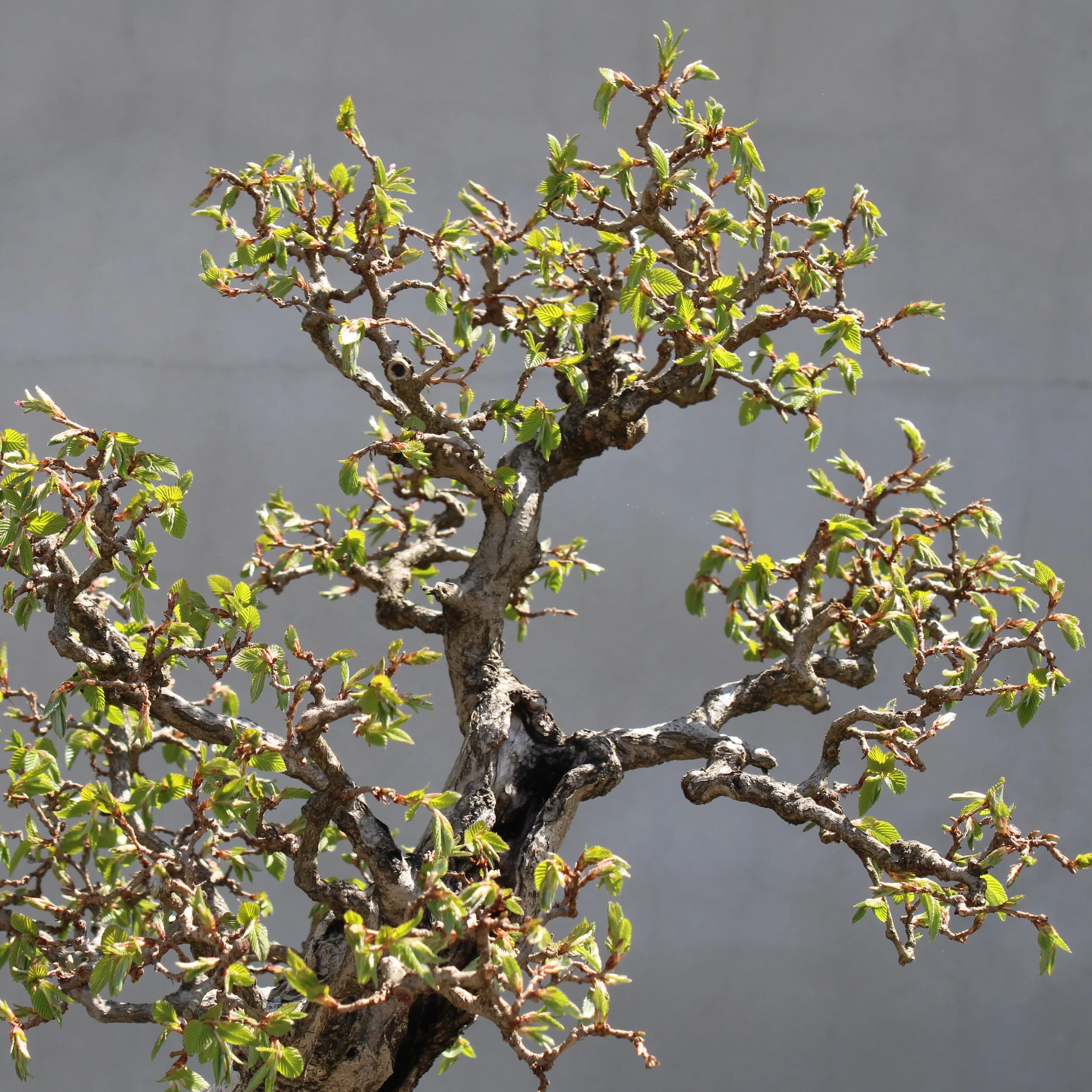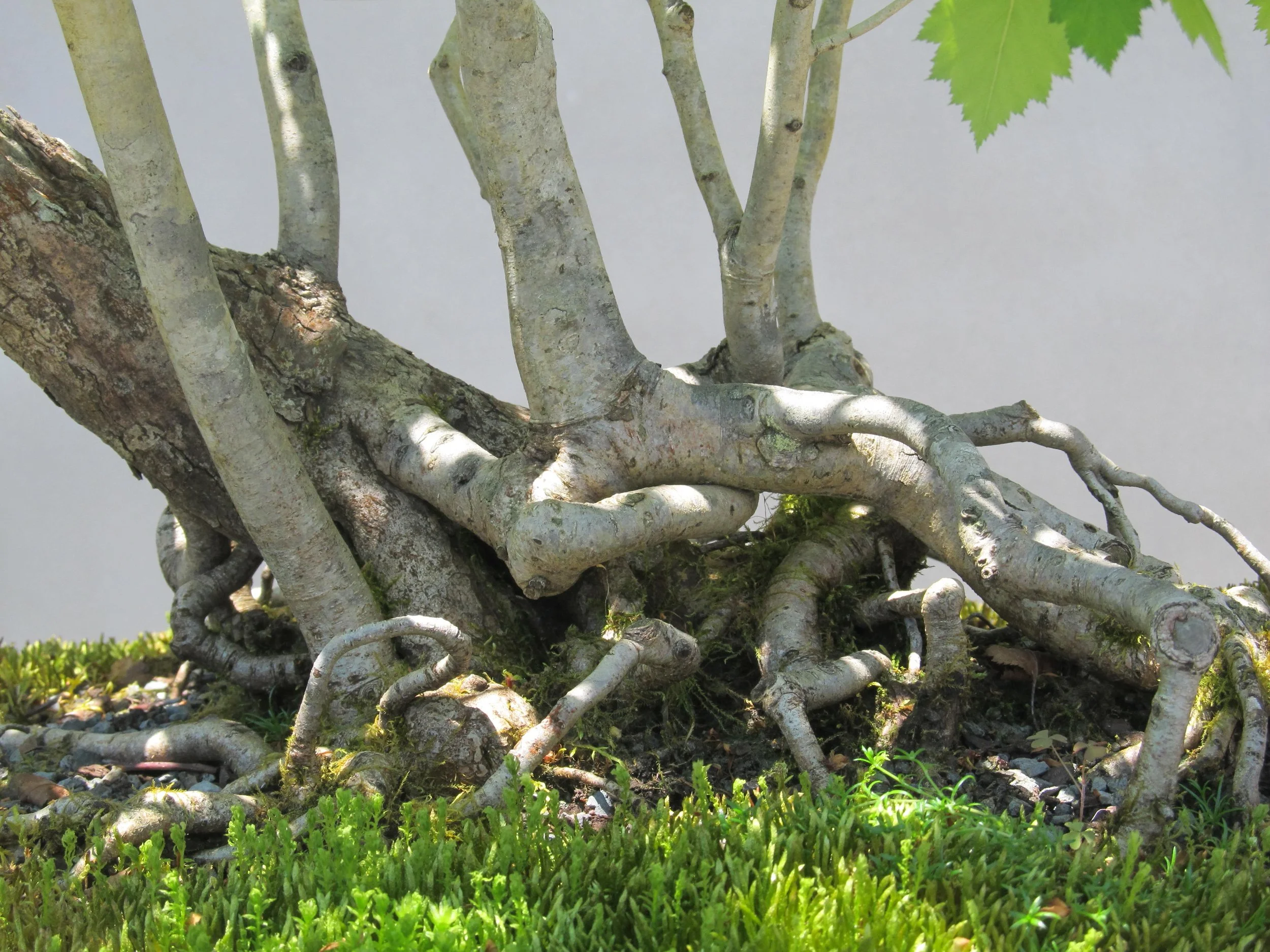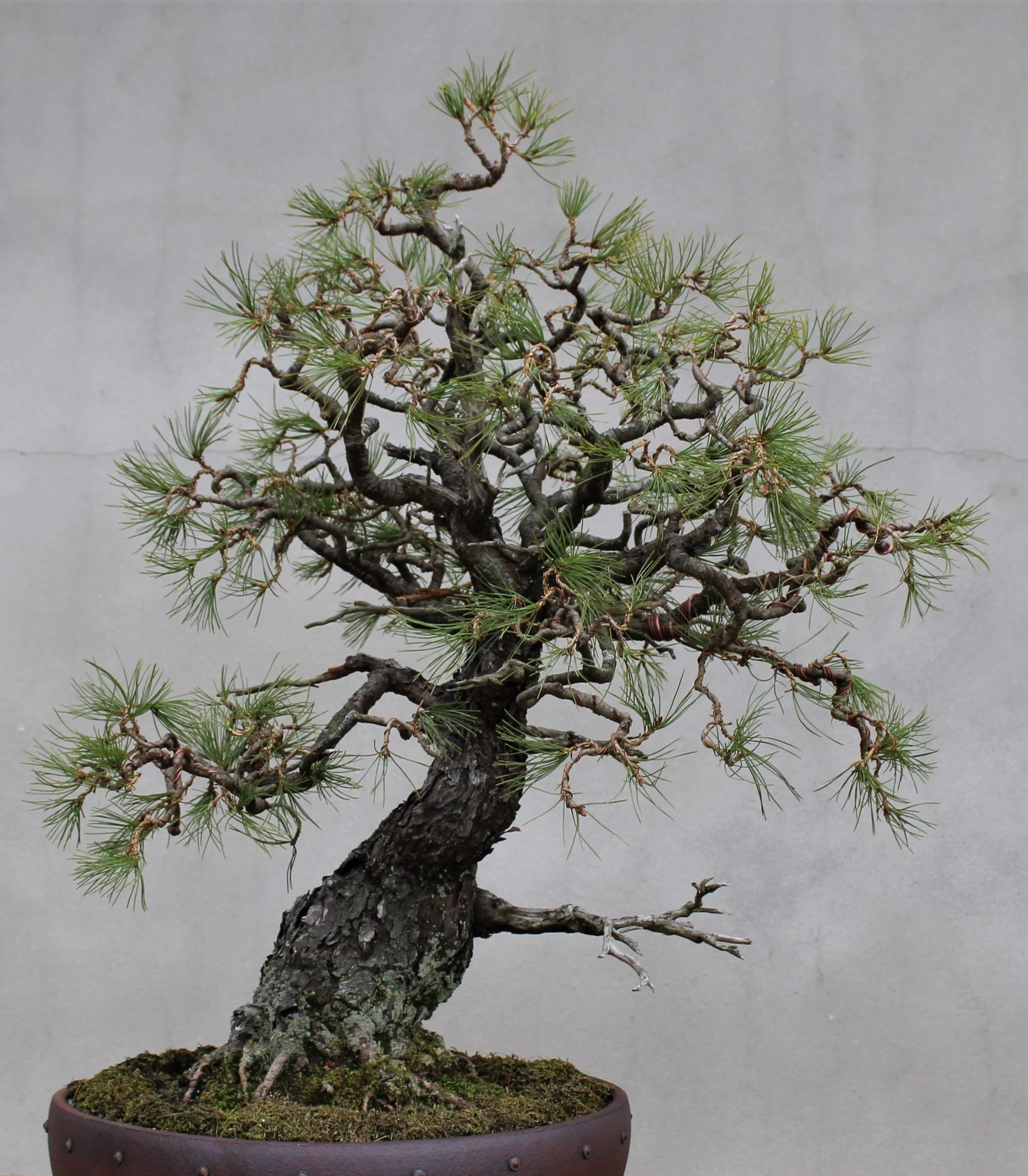The Age Thing Again - Part 6, A Conversation
I have to admit, I'm feeling a little confused by what you've been writing about age and bonsai. You say the Arboretum's trees aren't old but they're still good, that it isn't necessary for a bonsai to be old to be good, then you turn around and say you wouldn't argue against bonsai being all about age. That doesn't add up for me. Yes or no -- is bonsai all about age?
Yes, bonsai is about age. But the age of the bonsai itself is not necessarily what's important.
To go right to the heart of the matter, it is useful to consider what makes a bonsai worth looking at. The short answer is that visual appeal is what draws the viewer's eye. Visual appeal is derived from a combination of factors, including health and vitality of the plant, physical features of the species, physical features of the individual plant, good composition in the shape and arrangement of the various elements of the plant, and a complementary relationship between the plant and the container in which it's potted. If a bonsai has these components in a fortunate combination it will be worth looking at. If a bonsai has all that plus genuine old age, then the potential exists for the visual experience to be even better. Age will often enhance certain physical features like trunk movement or bark in ways that are not possible to achieve without a significant passage of time. That's part of the reason why there is such a premium placed on genuinely old plant material for bonsai use. Another aspect of it pertains to the wonder of being in the presence of a living thing that has survived for a long time.
That makes it sound like older is better!
Older can be better in a bonsai, but not automatically so. Would you rather have a very old bonsai that is also very ugly or a younger tree that has visual appeal? Many of the old trees collected from the wild look pretty scruffy as they exist in nature. They are old, though, and dwarfed in their development, so the people who collect these trees recognize the character of age in the contorted trunks and branches and rugged bark and they look past the ungainliness. The collectors want the age and are betting that the tree can be made to look better. Once it is certain the collected tree has successfully transitioned to container culture (which can take years), the work of converting it into a visually appealing bonsai can begin. A great deal of skill is required throughout the process. Most bonsai enthusiasts, for all their desiring of a truly old collected tree, would be scared to death to work on such a plant for fear they would kill it. Many of these venerable trees do die, either from the trauma of being collected or from being mishandled after collection. All this difficulty adds to the monetary value of a great old collected specimen that has been successfully transformed into a bonsai. Bonsai like that sell for tens of thousands, even hundreds of thousands of dollars.
Let's turn our attention now to the other kind of bonsai, the kind that comprise most of the Arboretum's collection. These are bonsai made from plants that were not genuinely old to begin with. Some bonsai are started from seeds or seedlings. Some are made from potted plants that are bought from nurseries or garden centers and intended for use in the landscape, woody plants that might be five or ten years in development at time of purchase. Many bonsai are begun from plants dug out of the ground in someone's yard, or from the woods, or salvaged from a site where established landscape material is being removed for renovation or new development. These plants might be ten, twenty, thirty years old or more. Although they are collected specimens they are different than those trees taken from extreme environments in the wild. They are old enough to have some size and even some degree of aged character, but they are not truly old as far as trees go.
Which type of bonsai is more expensive to buy — a good one made from an ancient tree collected from an extreme site or a good one made from one of the other sources of plant material?
Assuming in both cases the bonsai is well crafted, the certifiably ancient tree will command a far higher price in a knowledgeable marketplace.
Well, there's the answer! The older the tree the more valuable the bonsai! The Arboretum's bonsai collection doesn't feature any truly old trees, but you say what you've got is still good. It sounds like if you had older trees your collection would be better.
That statement is only true if your highest measure of value is monetary. To be fair, we are conditioned to think that way — the more something costs the more it must be worth. That's a central tenet in the culture of consumerism. At the risk of sounding like a sentimental idealist, let me confess to believing there are things in life worth more than money. Here are a few examples: The forgiveness of family and friends; a sense of purpose in the work you do; living up to the trust of a child; memories of people and places long gone; feeling the cool breeze on your skin as you watch the sunset over the mountains at the end of a summer day.
All sorts of people come from all over to visit The North Carolina Arboretum. When they walk in the bonsai garden and see the little trees on display, they have the opportunity to enjoy the beauty of nature presented in a unique format. Visitors see creative representations of trees and landscapes in miniature, and these have the power to evoke thoughts and feelings connected to the greater natural world. Bear in mind, what they are viewing is intended as art. The experience is suggestive, not limited by any need for what the viewer is looking at to be literally "old". The plants are shaped to look like they are old, to mimic the effects of age, done in a way convincing enough that the illusion prompts a response similar to what people would experience if they were in the presence of full-sized old trees of great character. It's not the exact same experience because the viewer is required to supply imagination to make the illusion work, just as you do when looking at a painted picture. Bonsai art, like all other art, works on our minds at the crossroads of memory and imagination. Not everyone has the requisite imagination, and many people have unfortunately been misled into thinking what matters most in bonsai is how old the plant is or how much money it's worth. It might be disappointing for folks like that when they visit our bonsai garden because we don't give them a number on either score. That's too bad, but you can't please everyone. We do our best to help visitors understand that the value of the whole construct is in what the viewer feels based on what they see. The really wonderful thing is how many people intuitively get it.
Okay, so bonsai is about age but it can be just an illusion of age. How do you make a tree look old when it really isn't old, and why would you bother?
Stick around. We'll get to that.





